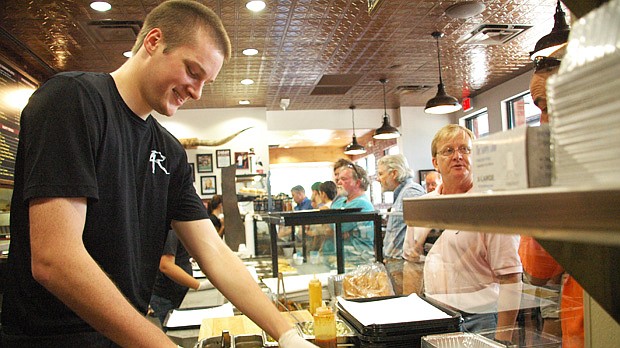- July 26, 2024
-
-
Loading

Loading

A fat jolly chef, in his crisp chef coat and puffy white hat, sings a little tune as he, surprisingly gracefully, twirls around the kitchen, alternating spoons and fingers dipped in his sauce for a little taste test.
Servers sneak french fries and stuff buttery rolls in their pockets and dine on rich foods between waiting tables. It’s free, it’s there, so restaurant workers must be indulging. And they’re probably overweight.
One University of Central Florida Rosen College of Hospitality dean thought so, until he crunched some numbers.
Read Pizam’s and other articles about the hospitality industry in the International Journal of Hospitality Management at tinyurl.com/foodservicestudy
“My biggest surprise was when I found that wasn’t the case … access was not a factor,” Dr. Abraham Pizam. “I think we have the wrong impression, or the wrong stereotype about chefs.”
Pizam remembered attending a talk by a famous chef who was in a wheelchair and too heavy to use the wheelchair ramp to get onstage. So they brought in a crane to lift him up.
“That image has been engraved on my mind,” Pizam said.
And he’s likely not the only one to picture chefs as the round, happy men with accents slurping fatty sauces off a spoon all day – it’s an image we see in movies and on television. Those who haven’t worked in the food industry imagine the servers eating whatever they want while they’re at work. When Pizam thought about those ideas, he hypothesized that food service workers would have a higher likelihood of being overweight because of their access to food.
He took nationally collected self-reported data, and sifted through the numbers. He found in that data, which was analyzed by the authors of “Obesity in U.S. Workers: the National Health Interview Survey” and included 41 occupations, that for the time period of 1997-2002, male foodservice workers had an obesity occurrence rate of 18.49 percent and were in the bottom eight of the occupations studied. Women foodservice workers had an obesity occurrence rate of 20.10 percent and were in the bottom 19 of jobs.
So really, they’re doing pretty well in terms of overweight workers. Truck drivers and office workers had a much higher prevalence of obesity.
“I’m not surprised at the results,” said Dr. Kevin Murphy, associate professor at UCF’s Rosen campus.
And once Pizam thought about his results, he wasn’t either.
“These people are in constant motion,” he said. “You will see this is a pretty exhausting type of occupation.”
Murphy worked in the restaurant industry for 22 years before becoming a professor, and saw the changes to his own physique when he left the restaurant business. As a professor, he spends time reading, on the computer and doing research. It’s much different from the 12-hour days on his feet at a restaurant, where he spent many years as a chef. Since his career change, he gained 25 pounds.
“In the restaurant business everybody is on their feet all day long,” Murphy said. “That burns a lot of calories. It’s really busy and you don’t always have time to eat … most of the time when cooks eat, they eat standing up.”
Pizam, Murphy and Orlando dietician and nutritionist Dr. Kaye-Ann Taylor also mentioned getting tired of the food — if you have access to donuts all day, you might not want to eat them after years of that — and the heat and pressure that comes from spending hours in a kitchen as reasons food service workers might be less overweight than other occupations. Work keeps them in constant motion, many restaurants don’t have break rooms and frown upon sitting between tables, and some servers go without breaks at all during an average eight-hour shift. When they finally do get a break, it’s quite a relief to be off their feet, said Taylor, who has 15 years of food service experience.
“For us, it was about the break, about the opportunity to sit down, not about the food,” Taylor said about working in hospital food service.
While food service employees aren’t the heaviest, Pizam’s research showed that there were still 996,563 overweight workers in that field during the time period studied. He hopes his article will bring awareness, and that restaurants will work to educate their employees about healthy eating.
Taylor was a little more positive, saying that people in other jobs can learn from the food service industry. None of her clients are in food service, but many sit at a desk all day. She said standing up every half hour, taking a walk during lunch and just being on your feet more helps combat obesity.
Pizam is glad to bring a little good attention to the industry with his findings.
“I have a mission here in life to make sure our industry is healthy, attracts people and has a positive image,” he said.